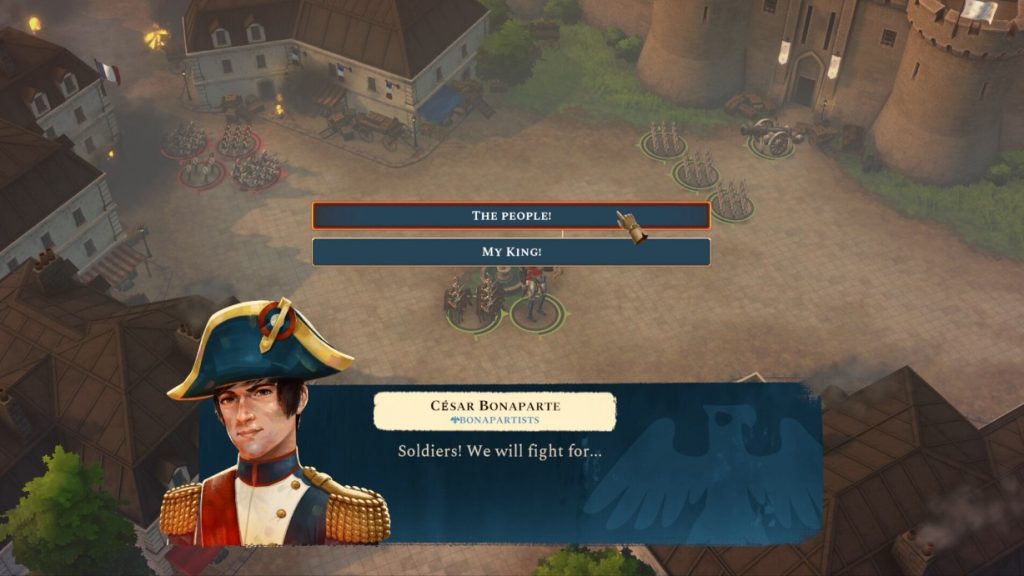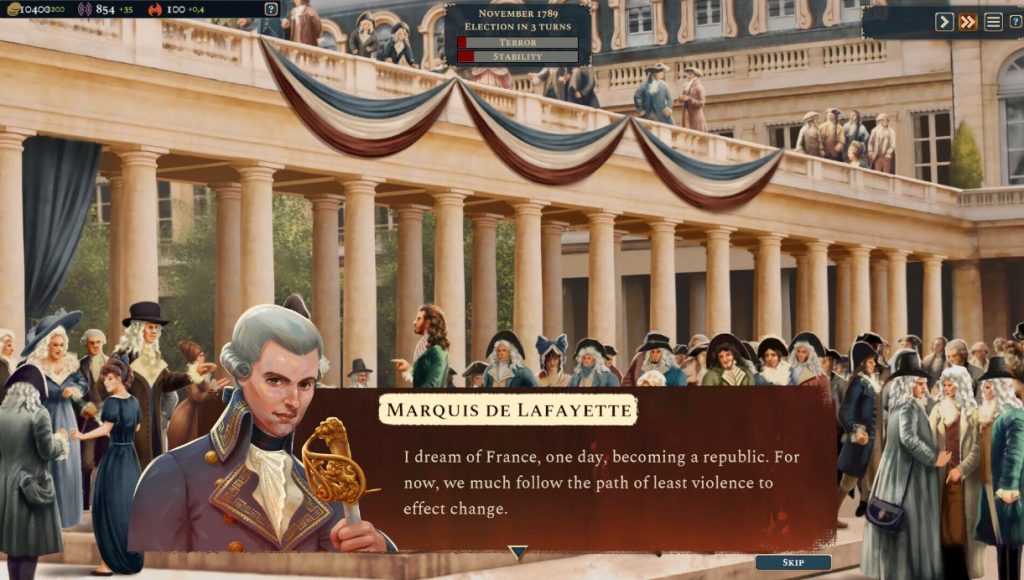Bonaparte – A Mechanized Revolution offers a fresh and intriguing take on the French Revolution, set in an alternate 1789 Paris where the Bonaparte legacy continues through characters Céline or César Bonaparte. This turn based strategy game tasks you with navigating a politically charged landscape, deciding whether to defend the monarchy, push for reform, or fully embrace the revolutionary spirit. What makes this game stand out immediately is its blend of political intrigue and tactical military combat, where you must manage armies, recruit soldiers, and command colossal mechanized units on the battlefield.

Playing as a member of the Bonaparte family brings a unique narrative perspective that immerses you deeply in the ideological struggles of the era. The game’s political system is complex and requires more than just brute force; mastering diplomacy and political maneuvering is key to reshaping France according to your vision. I appreciated how the game avoids bias, portraying the French Revolution fairly without pushing any particular agenda. This balanced view helps create a more authentic and engaging experience. However, I did find some aspects of the system frustrating, especially regarding the Convention and law making mechanics. There is a lack of transparency in how voting power is calculated and unclear explanations of how laws impact your adversaries. This ambiguity sometimes made it difficult to strategize effectively.
Combat is largely traditional turn based fare, which feels familiar but also somewhat basic in its execution. The standout feature here is the introduction of combat automatons inspired by Steelrising mechanized units that add a fresh layer of tactical depth. However, while visually impressive, the story and integration of these machines felt underdeveloped to me. The game does not fully explain why these mechs exist in this alternate history, leaving a significant narrative gap. I believe that if the background and tactical possibilities of the automatons were expanded, the game could elevate itself from a solid tactical experience to a truly memorable one.

I also noticed the game could benefit from enhancements in its audio visual feedback. Button clicks, end of turn signals, and other action sounds are minimal and could use greater polish to improve immersion. Dialogue sequences tend to be drawn out; tightening them up would help maintain momentum and focus. Visually, the game succeeds in capturing the period’s atmosphere with detailed environments and character designs that make the alternate history setting believable and engaging.

In summary, Bonaparte – A Mechanized Revolution is a fascinating twist on a well trodden historical event. It combines political simulation and tactical combat in an inventive way, and the presence of mechanized warfare adds a unique spin. That said, the game still feels like a work in progress in some areas particularly in narrative depth and tactical complexity. With further refinement, especially around the mech backstory and political mechanics, I see great potential for this title to become a more precise and high quality strategy game. If the developers address these issues, I would be eager to see how much richer and more satisfying the experience could become.